Description
Day 01: ARRIVE DELHI
Our representative will meet you in the arrival area of the airport after you clear all immigration and custom formalities. Depart for your hotel and check in for your stay.
Delhi is India’s capital and a major gateway to the country. Perhaps there is no other capital city in the world so steeped in history and legend as the Indian capital Delhi. It was the magnet, which drew the Mongols, Turks, Persians, Afghans, Mughals and the British, all of whom contributed to its glorious but turbulent past. The fascination with Delhi was such that even though it was abandoned many times, its rulers returned to it again and again rebuilding it at least seven times. Today, the twin cities of Old and New Delhi still intrigue Indians and tourists alike as the cultural and political capital of the largest democracy in the world.
Hotel in Delhi
Category A Property: The Suryaa (Deluxe Room)
Category B Property: The Leela Ambience (Deluxe room)
Category C Property: The Taj Mahal (Deluxe Room)
Day 02: DELHI (B)
After a short briefing, set out on a tour of Old Delhi, the capital of Mughal dynasty between the 16th and 19th centuries. Visit Jama Masjid – the largest mosque in India built by the Mughal Emperor Shah Jahan. From here, board the cycle rickshaws for a tour of Chandni Chowk, known as The Moonlit Square of India. As you drive through the narrow lanes, witness the architectural marvels, the multi-coloured facades, beautifully decorated shops, ethnically dressed men and women and get bombarded by the cries of hawkers and fragrances emanating from the potpourri of eateries that line these historical alleys.
During the British regime, the street underwent major changes and since then this area has witnessed some of the most important events in Indian history. Today these splendid ruins and tales of valor are a testimony of the evolution of the times. Chandni Chowk truly reflects the national unity, secularism and diversity of India.
We then pass through the Red Fort, a mid 17th century fort complex that dominates the area and visit the Raj Ghat, a simple and stunning memorial to Mahatma Gandhi, one of the main architects of India’s Independence from the British.
Next drive through New Delhi, passing by Presidential Palace- the one-time imperial residence of the British viceroys; the India Gate – a memorial raised in honour of the Indian soldiers martyred during the Afghan war, Parliament house and other government buildings built in the first quarter of the 20th century by two famous English architects, Sir Herbert Baker and Sir Edwin Lutyens. It was during this time period that the capital of the British Empire was shifted from Calcutta to Delhi.
The tour to Imperial Delhi will include a visit to the Qutub Minar, the tallest stone tower as well as one of the finest Islamic structures raised in India. Then visit Humayun’s tomb, built by the widow of the second Mughal Emperor, Humayun, it is an outstanding monument in the Indo-Persian style, a precursor of the Taj Mahal.
Day 03: DELHI – JAIPUR By surface: 250 km/+/- 05 hour
Morning, travel west to the picturesque capital of Rajasthan – the beautiful Jaipur, a city awash with pink, the color of hospitality in Rajput culture.
Jaipur – also known as the ‘Pink City’, for the abundance of pink plastered stone used to build its massive forts, magnificent palaces and exquisite temples. The city built in 1727 A.D by Maharaja Sawai Jai Singh II followed a grid system, which made it the only planned city of its time. A young Bengali architect Vidhyadhar Bhattacharya designed the city in accordance with Shilp Shastra – an ancient Hindu treatise on architecture. There is far more to the city than just its famous monuments and to get a complete experience of Jaipur, uncover the mysteries of the bazaars and visit silversmiths, turban sellers and traditional markets.
On arrival, check-in for your stay.
Hotel in Jaipur
Category A Property: Holiday Inn City Centre (Superior Room)
Category B Property: Hilton Jaipur (Hilton Guest Room)
Category C Property: Fairmont Jaipur (Fairmont Room)
Cultural connection (Optional):
Walk by Amber – Beyond the Fort: Amba, consecrated to the Mother Goddess, known as Gatta Rani (Queen of the Pass) was originally occupied by the Meena, a caste who claim their descent from the Matsya Avatar or the fish incarnation of Vishnu. Older than the famous fort and palace complex the now sleepy town of Amber is rarely visited by foreigners. Dotted with numerous historic temples, Havelis and a fascinating step well this two hour walk is a perfect accompaniment and anecdote to any visit to the busy Fort and Palace complex.
Day 04: JAIPUR
After breakfast, visit the sprawling Amer Fort. Jaipur’s Maharaja Man Singh, Mughal Emperor Akbar’s most successful General, started constructing Amer Fort in the 17th century. Before the City Palace was constructed in Jaipur, Amer was the seat of power. The Fort is surrounded by fortified battlements and overlooks the Moat Lake. Once you are on top, stroll through the sprawling complex of courtyards and halls. Many of the rooms have delightful wall paintings, with precious stones and mirrors inlaid in the walls. Most fascinating, perhaps, is the Sheesh Mahal (hall of mirrors) where a single lamplight is reflected in the many mirrors, lighting up the room.
Return to the city, with a photo-stop at Hawa Mahal (the Palace of Winds). Five stories in height, and built of red and pink sandstone highlighted with white quicklime, it is thought that the women of the royal harem used the many casements to observe everyday life in the street below without being seen.
Continue to Jantar Mantar, an observatory built by Sawai Jai Singh ll in the 18th century. The Maharajah, a scientist as well as an astronomer, had the principles of Euclid translated into Sanskrit. One of the most remarkable sites in Jaipur, the Jantar Mantar has fourteen major geometric devices for measuring time, predicting eclipses and tracking stars and planets. Just next to the observatory is the City Palace. Built within the fortified area of the original city, it has one of the finest monumental entrances in India. The Palace is now principally a museum housing a collection of great treasures, including miniature paintings, carpets, royal garments and other interesting objects from Jaipur’s intriguing past. The former royal family retains a part of the palace for their personal use.
You will have some leisure time at the hotel or opt to visit the colorful local market. Walk through the old city of Jaipur past the Palace of Winds and market stalls before heading back to the hotel. Please be aware that these are very old market places in Jaipur used almost entirely by local people, hence you should be prepared for the hustle and bustle in the streets.
Cultural connection (Optional):
Walk by Amber – Beyond the Fort: Amba, consecrated to the Mother Goddess, known as Gatta Rani (Queen of the Pass) was originally occupied by the Meena, a caste who claim their descent from the Matsya Avatar or the fish incarnation of Vishnu. Older than the famous fort and palace complex the now sleepy town of Amber is rarely visited by foreigners. Dotted with numerous historic temples, Havelis and a fascinating step well this two hour walk is a perfect accompaniment and anecdote to any visit to the busy Fort and Palace complex.
DAY 05: JAIPUR – AGRA By surface: 236 Km /+/- 06 hour
Morning, commence your drive to Agra passing some incredible scenery. Stop enroute at Fatehpur Sikri – the deserted red sandstone city, an outstanding example of Mughal architecture built by the Great Mughal Emperor Akbar as his capital and palace in the late 16th century and abandoned after 15 years due to scarcity of water. It was a veritable fairy tale city and its ‘ruins’ are still in a pristine condition.
Continue drive to Agra and on arrival, check in for your stay.
Agra – Once a small village on the banks of the Yamuna, it was transformed by two great Mughal monarchs, Akbar and his grandson Shah Jehan into the second capital of the Mughal Empire – Dar-ul-Khilafat, or ‘seat of the Emperor’ in the 16th & 17th century. A world of contrasting edifices of red sandstone and white marble, narrow galleys, bustling streets and small buggies, Agra retains the irresistible charm that made this the favourite city of the Mughals.
Cultural connection (Optional):
Hot Air Balloon Experience in Jaipur: The ‘Pink City’ is favored equally for its vibrancy as well as its arresting monuments. Be mesmerized by the city as you fly over and absorb its riotous cocktail of Colors, Forts & Palaces. Best time: From mid-September till mid-April, best have the flight in morning before breakfast.
Walk down the Rustic Village of Kachpura: The Heritage Trail of Agra brings you some amazing behind the scenes of life and times throbbing in the shadows of the Taj Mahal. Best part being, the trail is a community based enterprise where a youth from the local community will show you around. Whatever is charged for this trail goes directly to funding various welfare works such as upgrading schools, building toilets etc. in the area and in creating sustainable livelihoods.
Walk by lesser-known, yet significant, Mughal-era monuments including Humayun Mosque and the historical wells of Baoli. Also see the ‘Gyarah Seedi’ carved from a single stone and situated at the edge of the River Yamuna, overlooking Agra Fort. Follow your guide on foot through rustic Kachhpura and experience an authentic side of rural India that you’ve probably never seen before, including a street play presented by the town’s youth. This will be an opportunity to learn about India’s rural lifestyle as we check out the traditional art form of Sanjhi – paper stencils drawn on the walls by young girls.
Beyond the Taj Mahal – Tales from Across the River: Cross the Yamuna river with us and there is more than what any book will tell you. Solitary corner turrets, ruined pavilions, Tombs, Mughal pleasure gardens and whole set of smiling people who call Agra their home. You will visit some of the lesser known river front monuments such as the Rambagh, a pleasure garden built by the first Mughal Babar, the Gyarah Sidi (11 Steps) that helped the early Mughals study star constellations and the Itimad-ud-Daulah, all rare remnants of pre-Taj Architecture.
Hotel in Agra
Category A Property: Four Point by Sheraton (Superior City View)
Category B Property: Double Tree By Hilton Agra (DT Guest Room)
Category C Property: ITC Mugha (Mughal Room)
DAY 06: AGRA
Rise early and visit Taj Mahal (closed on Friday). It is fitting to see this extraordinary monument by the first light of day as its exemplary beauty is awe-inspiring and will create an unforgettable memory.
Said to be one of the most elegant and a harmonious building in the world, Taj Mahal was built by Mughal Emperor Shahjahan in 1630 AD to enshrine the mortal remains of his beloved Queen Mumtaz Mahal. Taj Mahal manifests the wealth and luxury of Mughal art as seen in architecture and garden design, painting, and calligraphy. The 144 foot double dome of the Taj is capped with a finial and the four minarets each 131 ft high and crowned by an open octagonal pavilion highlight the perfect symmetry of the tomb.
Note: Taj Mahal is closed on every Friday.
Return to hotel for breakfast.
After a leisurely breakfast, visit the Roman Catholic Cemetery – Agra’s best kept secret. At first sight one would think these are Muslim graves. But a closer look—from the top—and one will see a crucifix carved with Latin inscriptions. The highlight of the Roman Catholic is the tomb of Dutch mercenary John Hessing – The Red Taj Mahal – built in the 19th century by his wife, albeit much lesser grandiose and humble.
Next visit to the Agra Fort – the seat and the stronghold of the Mughal Empire under successive generations. This was the seat of Mughal rule and administration and the present structure owes its origins to Akbar who erected the walls and gates and the first buildings on the eastern banks of Yamuna River. Shah Jehan added the impressive quarters and the mosque while Aurangzeb added the outer ramparts.
Late afternoon enjoy Hi Tea with local family and later proceed to visit Mehtab Bagh takes you into the ancient village of Kachpura and Humayun’s Mosque. The walk ends in Mehtab Bagh from where you will have the opportunity to watch the Taj Mahal during sunset from across the river.
DAY 07: AGRA – JHANSI – KHAJURAHO By Train (0810/1025 hour)
Post breakfast, transfer to the railway station and board the train to Jhansi.
This train journey will offer opportunity to see the early morning life around the country side. Please note, on this train seat will be on air conditioned Chair car coach class. Though Indian Railways is the largest rail network in Asia, travel by train in India isn’t similar to travel on Amtrak or European rail service. You will be assisted in boarding the correct coach, seat and once you have reached the destination, just wait at the platform and do not leave the station.
Arrive Jhansi and drive for Orchha.
Orchha was founded in the 16th century by the Bundela king, Rudhra Pratap, on the banks of the Betwa River. This is a a medieval city frozen in time and space, existing even today as it must have done in the 16th and 17th centuries, when it was built. The countryside undulates gently between riverine plains and rolling forest-clad hills and the landscape is dotted with palaces and temples, a fortress and cenotaphs. The architecture is a synthesis of traditional Hindu, hybrid Indo-Saracenic and ornate Mughal. One of the finest sights is the view of the cenotaphs from across the Betwa River. Visit the Jehangir Mahal, the most grandiose structure in Orchha; the Raja Mahal Rai Praveen Mahal.
Hot lunch will be provided at the nearby Amar Mahal and then drive to Khajuraho where all of life — joy, love, divinity, war — is depicted in fine detail on every inch of its 85 Hindu and Jain temples.
Continue drive to Khajuraho and on arrival; check in for your stay.
Khajuraho was built by the Chandela dynasty, which rose to power in Central India between the 10th and 11th centuries and is home to some 25 odd temples depicting the different facets of life, including the erotic. These erotic carvings on some panels have given rise to much speculation since Khajuraho’s rediscovery by a British officer in 1838. To preserve it for posterity, Khajuraho has been declared a World Heritage Site and is among the prominent destinations on the world tourism map.
Hotel in Khajuraho
Category A Property: Ramada Khajuraho (Superior View)
Category B Property: Radisson Jass (Deluxe Room)
Category C Property: The Lalit Temple View (Garden View room)
DAY 08: KHAJURAHO – VARANASI By: Air
Morning explore the famous Western Group of Temples with your guide.
The name Khajuraho is derived from the Hindi word khajur meaning date palm. The city was once the religious capital of the Chandela Rajputs, a Hindu dynasty that ruled this part of India from the 10th to the 12th centuries. The Khajuraho temples were built over a span of a hundred years, from 950 to 1050. The whole area was enclosed by a wall with eight gates, each flanked by two golden palm trees. There were originally over 80 Hindu temples, of which only 22 now stand in a reasonable state of preservation, scattered over an area of about 8 square miles (21 km²).
The temples of Khajuraho are an example of religion laced with erotica. They are fine examples of Indian architectural styles that have gained popularity due to their salacious depiction of the traditional way of life during medieval times. They were rediscovered only during the 20th century and the jungles had taken a toll on some of the monuments.
Afternoon fly to Varanasi, a city of more than a thousand temples and shrines, sacred to Hindus and Buddhists alike (Please note, luggage allowance on this flight is 15 kg checked in baggage and 7 kg hand luggage).
On arrival, assisted transfer to the hotel and check in for your stay.
The ‘eternal city’, Varanasi or Benares, is one of the most important pilgrimage sites in India, and the Ganges, which flows through the city, is believed to have the power to wash away the sins of mortals. For the Satpious Hindu, the city has always been a special place, and it is considered a particularly auspicious place to die, ensuring an instant routing to Heaven.
This evening, visit the banks of the sacred Ganges for a special evening cruise on the Ganges River on country boats to see the devout Hindus performing the “Arti Puja” with lighted lamps. The presiding priests stand on a Chauki (wooden stand) near the water. To the chant of Sanskrit mantras, and the clash of cymbals and drums, the river is worshipped with flowers, incense, sandalwood, milk and vermilion. First the blazing camphor lamp and then the many flamed aarti lamps are raised high and then arched back to the water, the dark river reflecting the golden flames as Ganges accepts the worship. It is the Ganges that gives Varanasi its spiritual resonance.
Hotel in Varanasi
Category A Property: Ramada Plaza (Superior room)
Category B Property: Radisson (Superior room)
Category C Property: The Gateway Hotel Ganges (Standard room)
DAY 09: VARANASI
Early this morning, take a boat ride on the sacred Ganges. Hindus regard the Ganges as the elixir of life bringing purity to the living and salvation to the dead. Watch the wonderful colors of the sunrise as you meander along the sacred Ganges River in a boat. As part of their pilgrimage rites, the faithful walk down steps into the river to perform their religious ablutions. Watching the people worshipping at the ghats is an extraordinary experience. You may also witness a funeral pyre, an essential part of the traditional Hindu funeral ceremony.
Disembark the boat and walk through the narrow streets of Varanasi before returning to the hotel.
This walk will take you through an inextricable maze of small streets and alleyways, hiding in disorderly array no less than 2,000 temples and shrines. Domes, pinnacles, towers and derelict 18th-century palaces dominate the left bank of the Ganges River. The streets are noisy, colour is rife.
Return to the hotel for breakfast.
Later, you will visit the holy city of Sarnath. Here in Sarnath, Buddha is said to have preached his first sermon after achieving enlightenment, setting in motion the wheel of law. Right near the Dhamekh Stupa are the remains of Ashoka’s pillar, with his name engraved in the stone. The stupa is believed to mark the spot where Buddha preached his sermon at Deer Park. Sarnath is also home to the museum that houses the iconic Ashoka Pillar with its four guardian lions, the emblem of independent India. Around the site are a series of temples built by Buddhist groups from around the world. We will have the special opportunity to chant with the monks at one of the Buddhist Temples.
The afternoon is at your leisure.
In the evening, interact with an Astrologer and to understand the importance of constellation and how Indian astrology works. There will also be the opportunity for to ask questions.
Cultural connection (Optional):
Bengali Tola walk: On this walk, you will have an opportunity to get a glimpse of the symbiotic life of the riverside people of Varanasi. Eventually, as you tour through the city you will end up on Bengali Tola, the street of the Bengalis, where you will be visiting the hidden Mother Goddess Kali shrines, and the vistas of life along the riverside. The tour continues to the historic ritual bathing site called Dashaswamedh, or the ten-horse sacrifice Ghat, the perfect way to conclude this walking city tour.
DAY 10: VARANASI– ONWARD FLIGHT By: Air
In the morning partake in Yoga session at the hotel. Yoga, the word derived from the Sanskrit word “Yuj”, means to bind, join, attach and yoke, to direct and concentrate one’s attention on, to use and apply. While practicing Yoga, one exercises yoking of all the powers of body, mind and soul.
Remainder of the morning is at your leisure. Hotel check out time is 12 noon.
Afternoon fly to Delhi and connect flight for onward destination (Please note, luggage allowance on this flight is 15 kg checked in baggage and 7 kg hand luggage).
Seasonally
Low Season: 16 Apr – 30 Sep
High Season: 01 Oct- 15 Apr 2017
Surcharges applicable for travelling during the Christmas and New Year period (from 21 Dec- 10 January 2017)
Based on Category A
For 4 – 6 passengers:
Low: $995 | High: $ 1195
For 2 – 3 passengers:
Low: $1250 | High: $ 1450
Single supplement:
Low: $350 | High: $ 540
Airfare supplement Khajuraho – Varanasi – Delhi: $300
Based on Category B
For 4 – 6 passengers:
Low: $1135 | High: $ 1350
For 2 – 3 passengers:
Low: $1395 | High: $ 1560
Single supplement:
Low: $415 | High: $ 625
Airfare supplement Khajuraho – Varanasi – Delhi: $300
Based on Category C
For 4 – 6 passengers:
Low: $1375 | High: $ 1695
For 2 – 3 passengers:
Low: $1650 | High: $ 1950
Single supplement:
Low: $575 | High: $ 1035
Airfare supplement Khajuraho – Varanasi – Delhi: $300








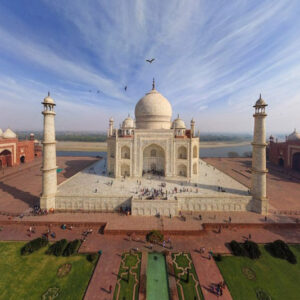
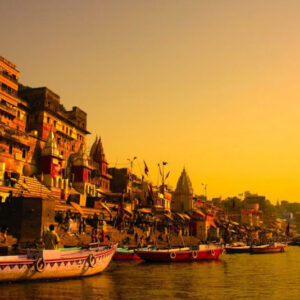


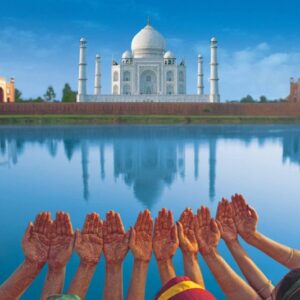
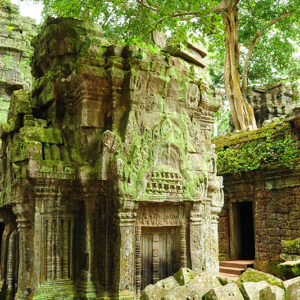
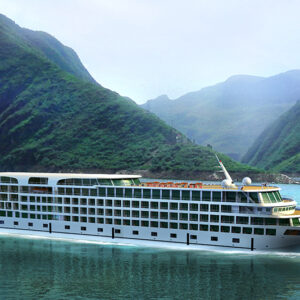


Reviews
There are no reviews yet.